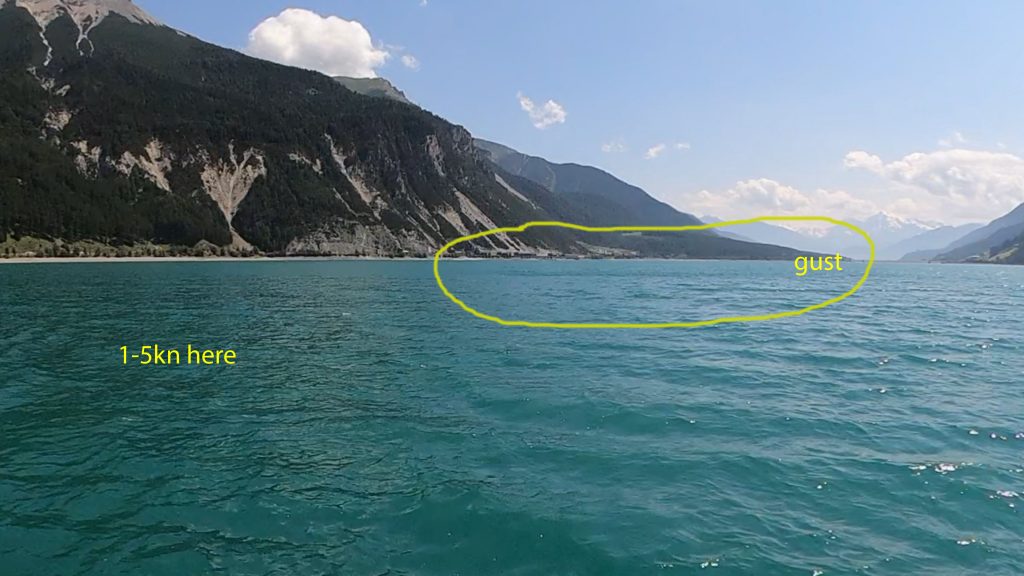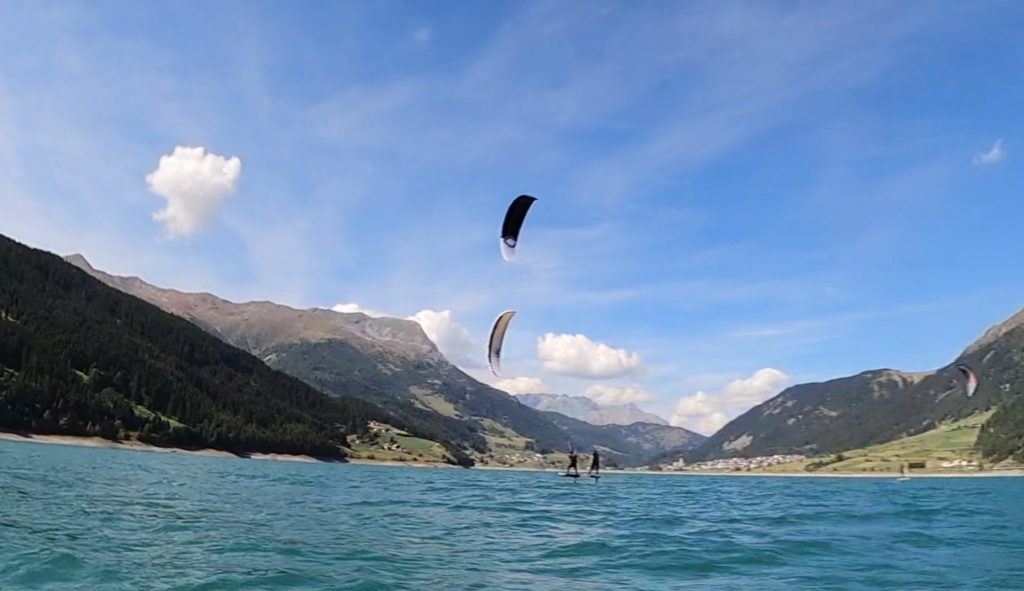Comparing different kites from various manufacturers can be challenging. If you are interested in foil kites you should definitely have a look at the two market leaders: Ozone and Flysurfer . Riding a range of our own kites over the years gave us the opportunity to test comparable kites from both manufacturers under different conditions (water and snow). A comparison between two great backcountry open cell kites (Ozone Explore and the Flysurfer Peak) was already posted here.
Since I primarily switched to hydrofoiling, as most of my kiting friends, we naturally also ended up buying more and more foil kites instead of LEIs, allowing us to compare different manufacturers. So here are some important advantages and disadvantages of foil kites that I experienced:
On snow, we exclusively prefer to fly foil kites such as open cellers or single skin kites, but also closed cell kites, when conditions allow it. The advantages are quite clear when comparing these to LEIs. Foil kites are more compact and lightweight for snow adventures, especially when you have to skin up a mountain first. Most foil kites also handle quite well under gusty conditions and are safer to fly, unless you are into megaloops and other daredevil maneuvers :-o) I have flown the Ozone Frenzy 7m2 and Explorer up to 70km/h winds gusting up to >100 km/h. Under these conditions you can see (video clip) why foil kites are unbeatable when s*** hits the fan on land.
On water LEIs naturally have key advantages (when conditions are right). One could argue that they are a safer bet (faster turning, simpler bridle setup and clear advantages during self rescue). So why would you even switch to foil kites on water if you are not racing?
A key reason for me is that foil kites clearly outperform LEIs under variable low wind conditions, where hydrofoiling is the only way to get going especially over land on lakes.
When comparing to land-sea breeze winds at the ocean there are some clear differences in wind patterns over land, because winds tend to be more variable. For example, for an average windspeed of lets say 10kn there will be gusts up to 15kn, but also periods where the wind stalls to below <5kn. These “wind holes” typically occur after a gust and cause inflatables to immediately stall and drop. Under these conditions it is often impossible to relaunch an LEI due to its weight. A typical example is shown here:

A gust (10-15kn) with an inherent wind directional change by about 20-30° is preceeded and followed by a period with little to no wind (i.e. 1-5kn). About 15 min later the wind picked up again and stayed more constant for the afternoon at about 8-10kn, which at this altitude compares to about 5-7kn at sea level. What is also sometimes forgotten: the ambient pressure drops with altitude, and one has to fly bigger kites (e.g. 2-3 sizes larger) at many lakes in the Alps compared to similar winds at sea level simply due to lower ambient pressure. Here a 9m2 foil kite would for example clearly outperform a 9m2 LEI, both in power and weight.
So how do foil kites from the leading manufacturers (Ozone and Flysurfer) compare on water?
On water, we have flown the Chrono and R1 kites from Ozone, and the Sonic and Soul from Flysufer.
The flying performance of the Ozone Chrono series is comparable to the Flysurfer Sonic series, but the Chrono has slightly better bar handling characteristics due to a more progressive bar feeling. Due to the lower aspect ratio, the Ozone Chrono flies a bit slower and less upwind than the Flysurfer Sonic. The Ozone R1 is therefore more comparable to the Flysurfer Sonic with a higher aspect ratio when it comes to speed. In contrast the Flysurfer Soul has the lowest aspect ratio of all four models tested, which influences speed and upwind performance.
Conclusion: The high performance foil kites from Ozone (e.g. Chrono or R1) have a better and more progressive bar feeling than the Flysurfer Soul and Sonic designs. Combined with a lower aspect ratio the Ozone Chrono series is therefore a slightly better choice for maneuver learning on hydrofoils (e.g. backroll tack, floaty jumps etc..). It requires less forceful steering input via the bar. On the other side, the Flysurfer Soul design has some unique features that make it a better allrounder on water when winds are not like at the sea, characterized by laboratory type conditions. This particularly pertains to water relaunch, beach launch, twisted bridle lines under gusty conditions, and stability during launching. The inflation period of the wing tips during launching of the Ozone Chrono v3 is clearly inferior compared to all of the Flysurfer Soul and Sonic models tested. Launching the Ozone Chrono v3 (13m2 and higher) without help is therefore often sketchy under gusty conditions >15kn. The inflation time of the Ozone Chrono v4 has indeed improved quite a bit and is now more comparable to the new FS Sonics. The aspect ratio of the Ozone Chrono series is lower than for the Flysurfer Sonic series (e.g. O3v4: 4.38 vs FS Sonic: 6.9 for 13m2). When it comes to speed the FS Sonic has therefore a clear advantage over the Ozone Chrono. Here you would have to go with the Ozone Race series to be comparable to the FS Sonic. The slightly lower aspect ratio of the Ozone Chrono on the other hand has the advantage over the FS sonic, that it is more stable under gusty conditions (e.g. less prone to twists in the wing tips), especially when flying the kite close to the edge of the wind window.

Due to a low aspect ratio (e.g. 5.5), the Flysurfer Soul flies a bit more like an LEI, leading to quite reduced upwind flying performance compared to the Sonic, the Ozone Chrono and R1, but the Soul has its own strenghts (e.g. for learning carving turns on a hydrofoil etc.). The ease of launching a Flysurfer Soul has also really impressed me – if I didn’t already own various open cellers for snowkiting, the FS Soul would certainly be one of my favorite snowkites, safe enough to fly under gusty high wind conditions. (Kites flown and tested for this blog entry: Ozone Chrono v3 and v4 13m2, Ozone R1v3 10m2, Ozone R1v4 9m2, Flysurfer Soul 8m2 and 10m2, and Flysufer Sonic v2 11m2 and 13m2).
If you have comments or questions you can leave a comment below or send a message to [info <at> kitewetter (dot) at]
